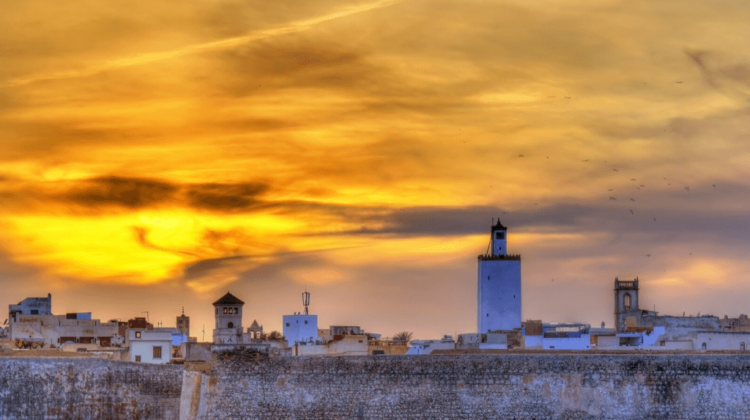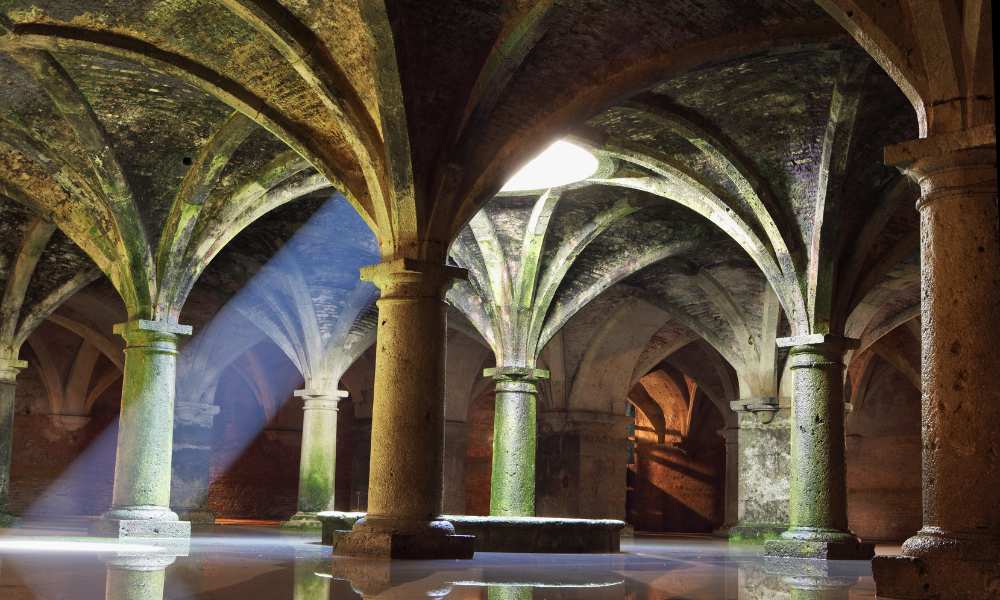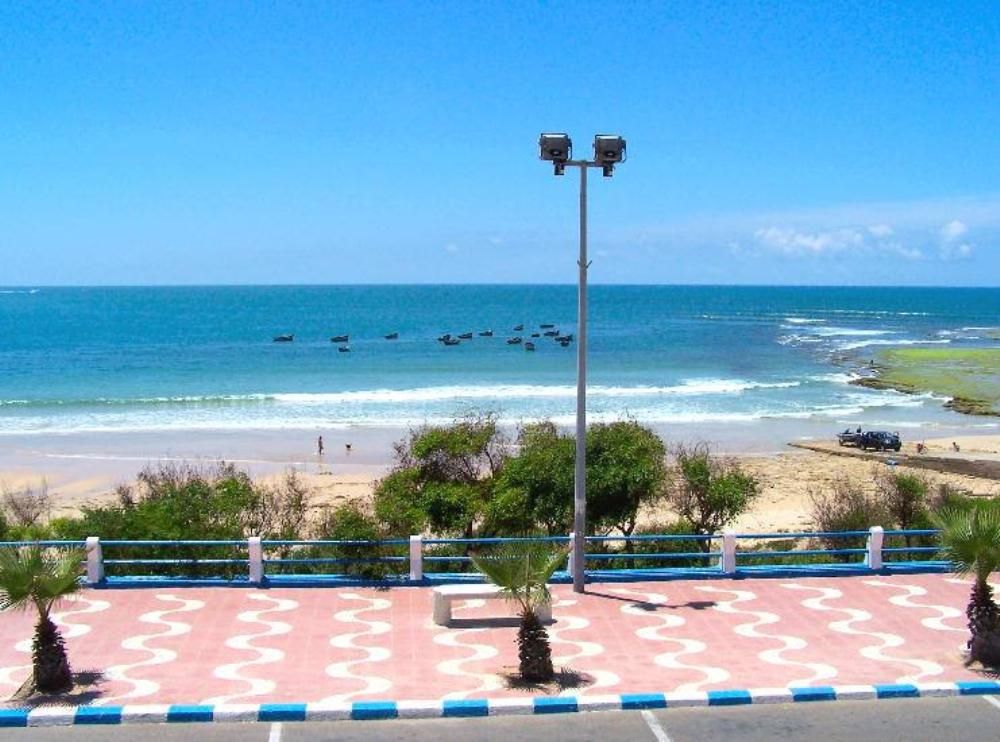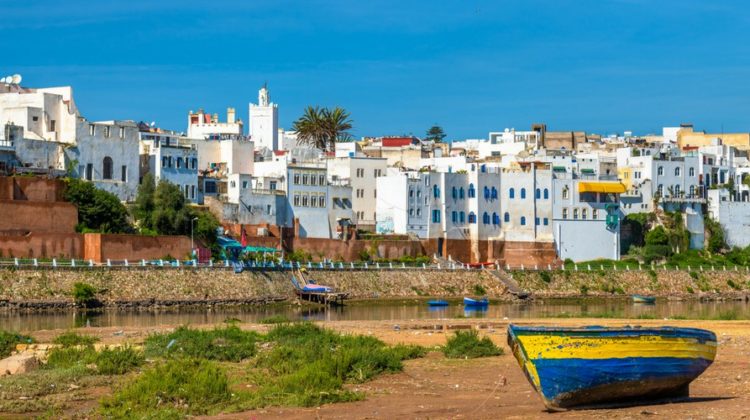
The town of El Jadida, located 90 km south of Casablanca, is not like other Moroccan beach resorts. This destination has a real Portuguese influence and is a delight to visit.
In the sixteenth century the town of Mazagan grew up around a fortress built by the Portuguese. Today this is part of the city of El Jadida and is also a UNESCO World Heritage Site.
El Jadida has a lovely beach which is popular with locals, and increasingly with overseas visitors. With a beach and a historic center El Jadida has a lot for visitors to enjoy.
Table of Contents
What to Do in El Jadida
The town itself is a UNESCO World Heritage Site, boasting well-preserved ramparts and magnificent winding alleys with strong ties to history still visible today.
As it is a much more laid back experience here than in other cities and towns, you won’t expect to be hassled or confronted by shopkeepers or people on the street.
Less chaotic, but it still holds true to the Moroccan feel of liveliness and togetherness.
The Portuguese Cistern

Located in the center of El Jadida’s historic Portuguese city, the old water cisterns exude a mysterious and perhaps macabre atmosphere.
The underground area dates back to the early 16th century when it was used as a warehouse to store arms. The Portuguese will then convert it into a water-storage facility to supply their fortress.
Today, the subterranean hall is one of the main tourist attractions in the city of El Jadida.
The area is reminiscent of a film noir setting, and rightfully so. The vast chamber with its looming pillars and monumental arches has served as a filming site on many occasions, -most notably Orson Welles’s Othello in 1952.
The stone floor covered in water and the sunlight worming its way through the small opening in the ceiling are distinctive features of the old cistern. The fluid light reflections on the damp floor stand out magnificently in the gloomy atmosphere.
The Portuguese cistern pulls you in with its mystifying and magical essence, a place for contemplation, where time doesn’t seem to exist.
Mazagan Fortress
Above the old water cistern lies the historic Fortress of Mazagan, a UNESCO-listed World Heritage Site. Constructed in the early 1500s, the fortress was designed in the form of a star, following the development of artillery fortification during the early modern period.
With six bastions and colonial-era Portuguese cannons to defend the city, today, this Renaissance coastal fortress makes for a picturesque environment.
The area is perfect for a long afternoon stroll, wandering through the ramparts to watch the sunset and get a view of the calming ocean.
Sidi Bou Afi Lighthouse
Interestingly, Sidi Bou Afi Lighthouse was built by prison labor and titled after a local saint. German prisoners from the First World War were assigned the responsibility of constructing the lighthouse and the colossal building is still functional.
Though it’s not fully open to the public -if you’re lucky enough to find the custodian, you can manage to get a glimpse inside-, the imposing lighthouse’s structure is a sight worth seeing and capturing.
Church of the Assumption
The Church of the Assumption, once a place of worship and prostration, now serves as a reminder of the cultural and religious impact of the colonial era.
This beautiful building complements the European style that distinguishes the historic Portuguese quarters.
A style that is unique to El Jadida and can only be found in very few Moroccan cities.
Though the outside of this tremendous edifice has been restored to its olden glory days, the church itself is now used as a movie theater.
Chapel of St. Sebastian
The Chapel of St. Sebastian, most commonly referred to as the Spanish Chapel, is yet another former religious building repurposed to suit more contemporary ventures.
Much like the Church of Assumption, the elegant facade of this chapel has also been subject to a series of renovations. Now, the outside looks closely similar to how it did centuries ago.
However, the building has been converted into a nice and cozy hotel to accommodate tourists and local travelers alike.
The tower is hard to miss when you’re sauntering around the fortress, and the chapel definitely worth visiting, even if to only snap some pictures of the splendid exterior.
Sidi Bouzid Beach

Sometimes, you just want to put your feet up, relax, and bask in the sun. Sidi Bouzid Beach is perfect for that.
Whether you’re an enthusiast surfer, you like sunbathing, or you just want to enjoy the ocean view while sipping on some hot mint tea and reading a book, you will find that Sidi Bouzid beach is the ideal place to be.
The beach is a few kilometers away from the city, so pack a picnic, a book, a surfboard, or keep it simple and go for a soothing, barefoot walk along the sandy shores.
Azemmour

If you want to fully immerse yourself in the local culture, food scene, traditional craftsmanship, and regional works of art, then a day trip to Azemmour should be on the top of your ‘must-visit sites list’.
The city is 18 kilometers (approximately 11 miles) away from El Jadida, situated on the bank of the Oum Er-Rbia River, and is home to a multitude of brilliant artists.
Azemmour boasts a fascinating history, a plethora of fun attractions, along with an exquisite beach featuring pristine waters and sandy shores.
The town is renowned for its art murals, sculptures, and dazzling street paintings created by local artists and residents.
Besides the thriving cultural scene and the popular water sports, you also get to experience both the Portuguese and Almoravid historic influences on the structural and architectural design of the city.
Explore the Jewish quarters, the artisan shops, the old mosques, the historic Kasbah, and Abu Shuayb’s mausoleum, as well as his annual moussem- if you happen to be in the city at that time.
Where to Stay
The hotels within El Jadida are mostly average accommodations that travelers expect from budget accommodations. For a true Moroccan experience, choose to stay in a traditional riad–a Moroccan-style bed and breakfast that gives explorers a taste of Moroccan home life.
The riads usually have enchanting terraces, perfect for eating your daily complimentary breakfast. Our favorites are Riad Soleil d’Orient, and the unique L’Iglesia that’s been converted from a 16th century church.
The biggest and newest hotel in the area is just down the beach at Mazagan Resort.
This lavish accommodation gives travelers a comfortable, inclusive-style resort property to choose from.
Right on the beach, this one takes you away from the buzz of the town’s center, but is great for travelers with cash to splurge.
Best Time To Visit
The best time to visit El Jadida is in the summer. June and July are wonderfully warm without being too hot, thanks to the mild Ocean Atlaantic temperatures it experiences.
Sometimes sleepy city also comes more alive in the summer, and the beaches turn lively with locals and travelers enjoying the almost constant sun.
Winter and the beginning of the year does see some rain, and lower temperatures sometimes dissuade visitors from traveling in these months.
Become mesmerized by the old stone walls, the relaxed atmosphere, and the pristine beaches.
El Jadida is an excellent travel destination year round that awaits your arrival.